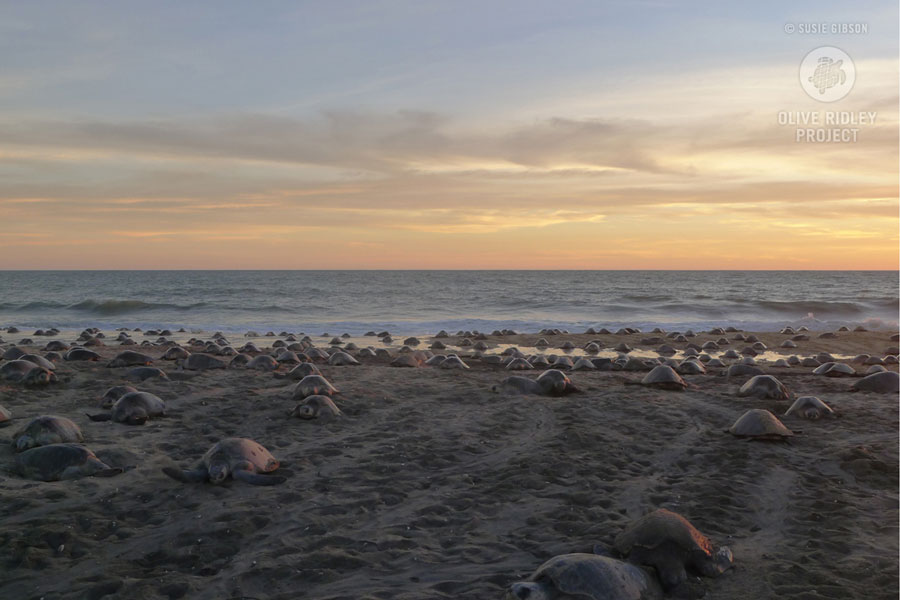It is very hard to say how many sea turtles are left. Sea turtles are not easy to count, so we use different methods to estimate population sizes.

One such measure used is the annual number of nesting events in each population. Since turtles can lay more than one clutch per year, the number of nests does not directly translate to adult females in a population. Additionally, sea turtles do not reproduce every year. An average of 2-6 years (depending on the species) can pass between active reproduction for each female.
Scientists take several factors into account when they convert observed nesting activity into the estimated population size. These include remigration interval, proportion identified & resighted females, sex ratio etc. A recent publication evaluating this process recommends caution that our current overall estimates of population sizes might still be too optimistic.
Recent estimates show us that there are nearly 6.5 million sea turtles left in the wild with very different numbers for each species, e.g. population estimates for the critically endangered hawksbill turtle range from 83,000 to possibly only 57,000 individuals left worldwide. Kemp’s ridley and flatback turtles each with a very narrow distribution could have less than 10,000 individuals left for each species (medium estimates: 25,000 and 69,000 respectively).
In general it is best to evaluate conservation efforts by assessing trends. We can see that conservation measures are fruitful in certain areas, because the general numbers of observed turtle nests increased over the years, even though we do not have specific numbers for individual turtles in the area.
References:
- Casale P & Ceriani SA 2020. Sea turtle populations are overestimated worldwide from remigration intervals: correction for bias. Endangered Species Research 30: 141-151.
- Mazaris AD, Schofield G, Gkazinou C, Almpanidou V & Hays GC 2017. Global sea turtle conservation successes. Science Advances 3.
- Spotila JR 2004. Sea Turtles: A complete guide to their biology, behaviour, and conservation. John Hopkins University Press, Maryland, US.
- Wallace BP 2020. How many sea turtles are there? SWOT Report XV: 41.

